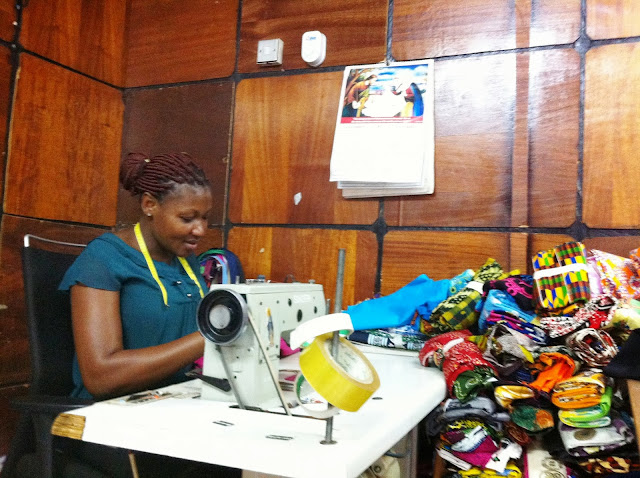Like most of Binh’s customers, I first came to know about
him through a recommendation. Having run his own tailoring business for more
than 20 years, Binh never advertises his services, so his customers learn about
him purely through word of mouth.
Now 54 years old, Binh came from a family of tailors and has
been working since he was 16. His parents taught Binh and his three
sisters and brother to sew from a young age and they would help their parents
in their small tailoring business. Today, all of his three sisters own their
own tailoring businesses in Hanoi – one of them living and working in the house
directly opposite Binh’s. His only brother has moved to Saigon and works in
business, but Binh has stayed in the family trade - he notes that he likes to
keep with traditions.
Although Binh’s parents worked as tailors out of same family
home and shop where Binh still lives and works today, the backdrop was vastly
different. His parents worked through Japanese and French occupation of Hanoi
and the American-Vietnam War. Back then,
employing staff was restricted by law, so Binh’s parents worked on their own
filling out a small number of orders each week. After his parents retired, Binh
started his own tailoring business.
He first met Thuy in 1990 when she came as a customer to his
shop to get some clothes tailored. Although Thuy worked in a clothing factory,
she did not know how to make clothes herself as she worked only on her small
part of the production line. After they married, Thuy quit her job at the
clothing factory, Binh taught her the basics to sewing and tailoring and today
she helps to sew zips and buttons and manages the finances.
When he first
started his own business, Binh worked by himself – as he explains, his expenses
were low back then and he only needed to work enough to earn a small amount of money
for food and other basic living costs. After getting married, he suddenly found
he needed to spend a lot more money! As luck would have it,
Doi Moi had taken place only a few years
before and in 1994 the United States would lift
their almost 20 year trade embargo on Vietnam, opening up the country’s economy to international business
and trade. Opportunities were ripe for small business owners like Binh and Thuy. At their peak, they employed 7 staff to support him and Thuy. However,
the economic downturn that hit Vietnam in 2011 has also affected their business.
Today, they have three staff who have been working with them for 20 years. Binh estimates that each day, they make together on average 10 pairs of pants and 5
dresses.
For each Madame Tây piece, Binh and Thuy estimates that it
takes 3 hours to put together a skirt from start to finish and 4 hours to put
together a dress. They explain that each
of these pieces take a bit longer to make because of the lining.
When I ask Binh what he imagines himself to be doing if he
hadn’t been a tailor, he pauses for a while and then shakes his hands perplexed,
tailoring he explains is his hobby. He points to the checked shirt and trousers
he is wearing and his daughter My’s denim jeans, noting that they were all
tailored by him.
You can find Binh and Thuy just around the corner from the
Temple of Literature.
House 7,
Alley Lương Sử B Quốc Tử Giám, Đống Đa, Hà Nội
Phone: +84
04 3732 1557



















































